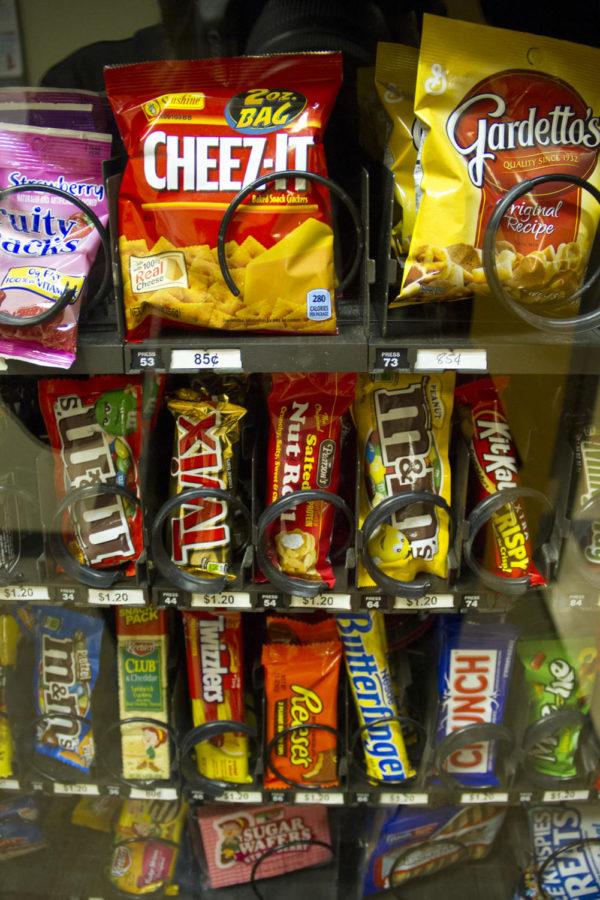New vending machine regulations regulate sodium, sugar, calories
Photo illustration: Megan Wolff/Iowa State Daily
The Department of Agriculture is proposing new rules on food and beverages sold in vending machines in schools. These new regulations aim to provide heathier food choices.
February 20, 2013
New regulations on competitive foods in schools proposed by the U.S. Department of Agriculture could change the way future ISU students choose their meals. Students will hopefully become more educated on what is in the products that they consume.
The U.S. Department of Agriculture is proposing new rules on all foods and beverages sold in vending machines, ala carte and school stores. The federal rules will regulate the amount of sodium, calories and sugar in items sold to students during their school hours.
“Thirty-nine states out of the 50 already have some kind of state law trying to deal with these competitive foods that are in the school system,” said Ruth Litchfield, associate professor of food science and human nutrition.
The federal rules have not been updated since the 1970s.
Lutchfield explained that the new federal regulations will give “an equal playing field across the country.”
New regulations require that any competitive foods sold in schools must be a fruit, vegetable, whole grain, dairy product or a low-fat protein source.
If the food does not fit into one of these groups, it must contain at least 10 percent of one of the four nutrients of concern including fiber, potassium, calcium and vitamin D, Litchfield said.
The changes are focused on improving the overall health of students across the country.
“We know we have some chronic health conditions in this country that are clearly linked to our current dietary habits,” Litchfield said. “So I think whatever we can do to help promote and make available those better choices, so that we can start decreasing the risk of diabetes, hypertension, cardiovascular disease and obesity, the better off we are all going to be.”
The regulations are not going to directly affect ISU students but could indirectly influence what will be available to them in the future, explained Nancy Levandowski, director of ISU Dining.
“We don’t have rules or regulations, but what we do is try to offer a balanced meal and many choices for students,” Levandowski said. “They’re young adults, they’re starting to make their own decisions. So we give them the information [on portion control]. I think that the students that come [in the future] will have a better understanding of that and I think it won’t be as much up to us to try to help students make good decisions.”
ISU provides many ways to educate students on nutrition and giving the healthy options on campus.
“Our dietician does programs with students about portion, sodium, caffeine, and understanding labels,” Levandowski said. “The number one thing you want to look at is the calories and what the portion size is.”
Levandowski said that a label reading class is great for people to attend to learn how to read the information provided on any packaged food. Other resources for nutrition include net nutrition, contacting the dining center, checking their Facebook and Twitter pages.
“Obviously there is food on campus that isn’t good for you, but Iowa State does a pretty good job of offering healthy options,” said Carolyn Hart, junior in dietetics. “Just about every cafe offers fresh fruit and some sort of salad or sandwich that will supplement your body with good nutrients.”
Hart said that although Iowa State provides students with plenty of opportunities to eat healthy; it is ultimately up to the student to take advantage of them.
Levandowski encourages students to take their health into their own hands.
“It’s nice to have guidelines, but really I feel like it’s about portion for our students if they want to make an impact,” Levandowski said.

















